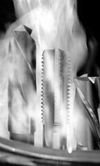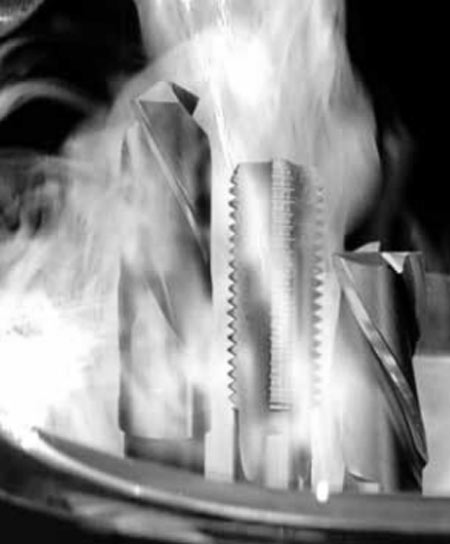Cryogenics
 The application of cryogenic treatments to materials has been discussed previously in RET-Monitor. In that article, we went into the basics of the treatment, how it is used as part of the hardening and tempering process for certain special steels, and touched on how it can also be used for relieving stress in metallic components.
The application of cryogenic treatments to materials has been discussed previously in RET-Monitor. In that article, we went into the basics of the treatment, how it is used as part of the hardening and tempering process for certain special steels, and touched on how it can also be used for relieving stress in metallic components.
We should not though expect to see benefits from throwing components into a bucket of something very cold. The details of the process are much more complex than this, and just as problems can arise with poorly executed heat treatment, so we can expect to find problems arising with poor cryogenic processing.
There are various temperatures at which different phenomena occur. For the transformation of retained austenite in steels to martensite, the requirement is to take the material to a temperature below the martensite finish (Mf) point. For most steels, this is somewhere in the region of -70 to -120 C (-94 F to -184 F). Carbon content has a marked effect on the Mf point of a steel, with increasing carbon content leading to lower Mf temperatures. For this purpose, frozen carbon dioxide (dry ice) can be used. Transforming retained austenite into martensite is known to increase material hardness and improve dimensional stability.
Beyond this level of cold, further benefits can be realised, and at lower processing temperatures than can be achieved with carbon dioxide, precipitation of fine carbides in steels has been noted, leading to improved wear resistance.
At what stage in the thermal processing of steel components cryogenic processing takes place depends on the alloy concerned. For maximum transformation of retained austenite, it is recommended to carry out cryogenic processing after quenching. However, some materials are damaged unless tempered immediately after quenching. Tempering is known to render the retained austenite more difficult to transform to martensite. In these circumstances a low-temperature temper to stabilise the material is used before cryogenic treatment.

Owing to the very low temperatures being considered here, the choice of coolant used in the process is between liquefied gases. Common sense dictates that we ignore oxygen, so we will sensibly use nitrogen. Given the proportion of nitrogen present in air, we are not restricted by the availability of the raw material from which the liquid is derived. There are a lot of industrial processes that use liquid nitrogen, and indeed you will find it used in some race engine shops for cooling components prior to shrink-fitting.
The temperature at which liquid nitrogen boils at atmospheric pressure is -196 C (-346 F). Some cryogenic processing companies now offer treatments using liquid helium, which like nitrogen is inert but boils at around -268 C (-452 F), only a few degrees above absolute zero. Liquid helium is more expensive to produce and store than liquid nitrogen.
It is not good practice to immerse expensive engine parts in liquid nitrogen or helium, as the extreme cold can induce some very steep thermal gradients which can lead to distortion, just as immersion into high-temperature salt baths can.
The process will generally see the parts suspended in an insulated cryogenic chamber or supported on racks while liquid nitrogen is introduced to the bottom of the chamber. The result of the evaporation of the nitrogen cools the contents of the chamber, and the rate of evaporation and the flow rate of liquid nitrogen into the chamber control the temperature of the chamber. As with heat treatments, a controlled cryogenic process will often specify a period over which the temperature of the chamber or its contents are reduced or returned to room temperature.
Fig. 1 - High-strength steel components in particular are known to benefit from cryogenic processing
Written by Wayne Ward